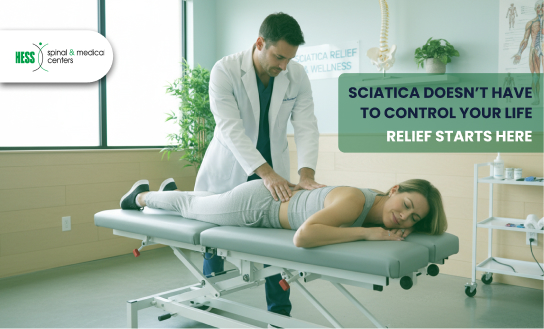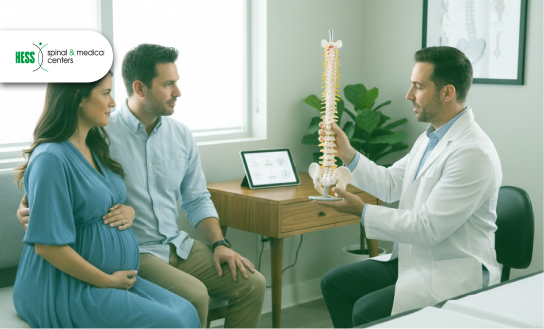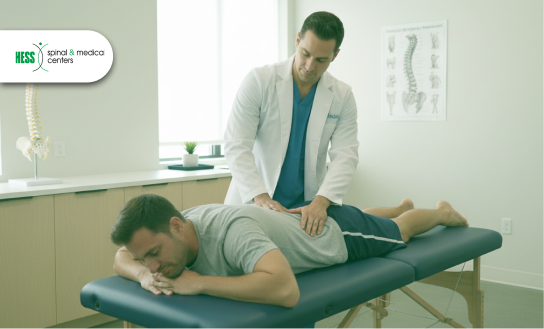
How Long Should You See a Chiropractor After a Car Accident?
Chiropractic Manipulation
October 21, 2025
How Long Should You See a Chiropractor After a Car Accident?

You never see it coming. One moment, you’re driving home, lost in thought or a favorite song and the next, everything jolts. Metal crashes into metal. When it’s done, you’re left sitting there, stunned and wondering if you’re truly alright.
The strange thing is, sometimes you feel fine. No broken bones. No blood. Just a dull ache, a stiffness in the neck, a discomfort you can't quite name. So you brush it off. You go home. You sleep it off.
However, the body has its own clock. And pain has a way of showing up uninvited days later, when no one’s looking. That’s when the real questions begin…
1) Why See a Chiropractor After a Car Crash?
Not every injury screams for attention right away. In fact, the most common post-accident issues like whiplash, joint misalignments, or micro-tears in soft tissue can quietly develop over days or even weeks. A chiropractor who is trained in post-accident treatment is especially useful in this situation.
A chiropractor focuses on diagnosing and correcting musculoskeletal problems (issues with your muscles, bones, joints, or ligaments) that often fly under the radar in emergency rooms. These injuries often don’t show up on X-rays but are felt in the days after, like stiffness, headaches, nerve pain, or a deep ache that wasn’t there before.
“Up to 70% of people involved in low-speed collisions report delayed musculoskeletal pain that can persist for weeks or months without proper care.”
Source— Journal of Orthopaedic & Sports Physical Therapy
Visiting a chiropractor early helps your body begin healing both properly and efficiently. Gentle spinal adjustments ease nerve pressure, improve movement, and calm inflammation without overusing pain medication. It’s about supporting your body’s natural ability to heal itself fully and effectively.
2) What About Whiplash Recovery Time?
Whiplash is sneaky. It doesn’t show up right away. Many people feel fine after a rear-end collision. Then, headaches start. The neck tightens. Dizziness sets in a day or two later. Whiplash is one of the most overlooked injuries after an accident. It is also one of the most persistent.
“More than 50% of people treated for whiplash report ongoing symptoms for a year or longer if care is delayed.”
Source— National Institute of Neurological Disorders and Stroke
Your recovery truly depends on how quickly you begin treatment and how your body responds along the way. Everyone heals differently, but here’s a general timeline based on what we’ve seen work best:
Mild whiplash – typically resolves in 2–3 weeks with consistent, targeted adjustments.
Moderate cases – may require 4–6 weeks of care, especially if there’s noticeable loss of motion or radiating pain.
Severe whiplash – often takes three months or more, particularly if nerves are involved or symptoms were left untreated for too long.
Chiropractic care goes beyond just easing your symptoms. It is all about restoring your body's full strength and function. The goal is not just to feel better right now, but also to keep you from experiencing pain again when you least expect it.
3) How Soon Should You See a Chiropractor After a Car Crash?

After a car crash, there’s a window when injuries are still fresh and easier to treat. Chiropractors call it the golden window and it’s typically the first 72 hours. That’s when inflammation is rising, soft tissue is starting to tighten, and spinal misalignments haven’t fully set in. The earlier you start care, the less chance those injuries have to turn into something long-term.
“Patients who begin chiropractic care within 72 hours of a crash recover 2x faster on average.”
Source— National Center for Biotechnology Information
But it’s not only about speeding up recovery. Starting treatment early also creates medical evidence that links your pain directly to the accident. In personal injury cases, that kind of documentation can make a major difference in how your claim is handled.
4) What Happens If You Wait Too Long?
When you delay treatment after a car crash, the damage doesn’t just sit still. Soft tissue injuries begin to harden. Inflammation settles into scar tissue. And mobility? That slowly starts to shrink, one stiff morning at a time. What could’ve been a few weeks of care can quietly turn into chronic pain that lingers for months—or years.
“Delayed treatment is one of the leading reasons personal injury claims are denied or reduced.”
Source— Insurance Research Council
There’s also the legal side. If you wait too long to get checked out, insurance companies may argue your injuries aren’t connected to the accident at all. They’ll ask why you didn’t seek care sooner and use that gap to question the validity of your claim.
It’s not about rushing into unnecessary care. It’s about giving your body the attention it needs before the damage becomes permanent—and making sure the paper trail supports your recovery every step of the way.
5) How Hess Spinal and Medical Care Complements Other Treatments

No single treatment heals everything—and that’s exactly why Hess Spinal and Medical Care takes a comprehensive, team-based approach to your recovery. Chiropractic care forms a strong foundation, but it becomes even more effective when combined with other therapies tailored to your unique needs.
“Multidisciplinary treatment plans combining chiropractic, physical therapy, and medical oversight result in faster recovery and improved function in over 70% of accident-related cases.”
Source— Journal of Multidisciplinary Healthcare
Here’s how we support your healing journey:
Chiropractic Manipulation: Gentle, precise adjustments that restore spinal alignment and relieve nerve pressure—helping your body function at its best.
Digital Radiography: Advanced, on-site imaging lets us pinpoint injuries accurately and monitor your progress without delay.
Individual Treatment Plans: Every body is different. We design a personalized roadmap for your recovery that adapts as you heal.
Injury Rehabilitation: Focused exercises and therapies to rebuild strength, flexibility, and stability, so you can regain your full range of motion.
Physical Therapy: Working hand-in-hand with chiropractic care, physical therapy supports muscle recovery and improves overall mobility.
Hess, your recovery isn’t left to chance. We collaborate closely with other healthcare providers when needed to ensure your care is cohesive, complete, and focused on what your body and your case really needs.
6) How Often Should You See a Chiropractor During Recovery?

Healing doesn’t follow a set schedule. How often you see a chiropractor depends on your injury’s severity and how your body responds. That’s why care plans are personalized and adjusted as you progress.
For mild injuries, like general soreness or stiffness, many patients benefit from chiropractic care 2 to 3 times a week for a couple of weeks. These early sessions aren’t just about easing discomfort—they’re about listening to your body before it starts to shout.
They calm inflammation, restore natural movement, and gently guide your body back to balance. Because even the smallest pains, if left alone, have a way of growing into something heavier than they need to be.
Moderate injuries, such as soft tissue strain or limited mobility, often require a bit more time and consistency. In most cases, 2 visits per week over 4 to 6 weeks allow the body to gradually regain strength and alignment without rushing the healing process.
For severe or complex injuries like intense nerve pain, serious whiplash, or major spinal misalignment, healing takes time, and that’s nothing to be ashamed of. These aren’t just physical wounds; they often affect how you sleep, move, and show up in your life.
In these cases, care may begin with 2 to 3 visits a week, sometimes over the course of 3 to 6 months or more. It’s not a quick fix but it’s a steady, thoughtful path toward real recovery.
And throughout it, your body is working hard to reclaim comfort, strength, and a sense of normalcy.
“Patients with chronic neck pain saw the greatest improvement with 2–3 sessions per week in the first month.”
Source — Journal of Manipulative and Physiological Therapeutics
We will monitor your progress closely and adjust your treatment plan as needed. The goal isn’t just to reduce pain. It’s to give your body the steady support it needs to heal safely, fully, and on your own timeline.
7) Every Body Heals Differently But Sooner Is Always Better
Experience teaches us that small pains ignored often turn into long-term burdens. What might have been a short period of healing can stretch into years of discomfort.
There’s no shame in feeling unsure. What truly matters is listening to your body and giving it the chance to heal before the damage becomes worse.
If you’re not sure whether what you’re feeling is serious, let a licensed chiropractor evaluate you. You have nothing to lose and a great deal to gain in healing.
Visit hessspinalandmedicalcenters.com or call (800) 618-4377. You can also send a fax to (813) 514-2725. Same-day appointments are available, with no upfront fees and transportation options to make your visit easier.
Recent Cases








